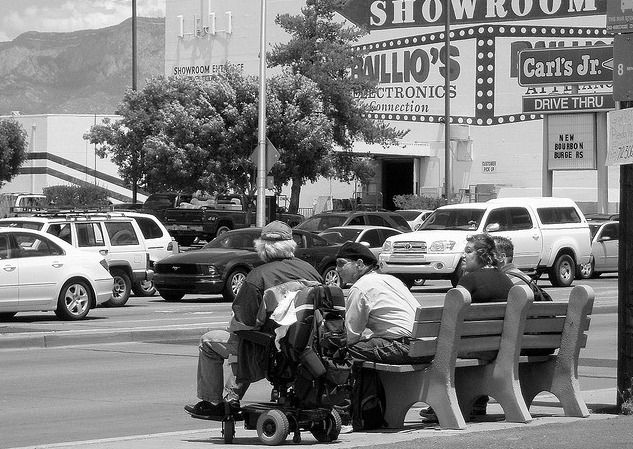A large percentage of the population is afraid to jump on a bus or a train. This undeniable fact is a major explanation for the limited mode share of public transportation in most American cities. In short, when people get into their private automobiles, they feel at ease doing so because they will not have to interact person-to-person with other people who could potentially be dangerous. The same cannot be said of transit.
Until transit agencies solve this problem — it is primarily a perceptual one — their efforts will constantly be handicapped by fear.
A new study by Nilay Yavuz and Eric Welch of the University of Illinois at Chicago suggests that these feelings are widespread and affect both men and women of all ethnic groups. The act of making oneself vulnerable in the public sphere is difficult to take not only for the most marginalized groups like the disabled and the elderly, but also for pretty much everyone else. People working in the transit field must remember that reducing fear of crime can play an essential role in promoting a sense of comfort among everyday riders.
Of course, it merits repeating the fact that you’re far more likely to die in a car accident than you are to be murdered by a random stranger anywhere, let alone on a train or bus. Most transit crime is petty and even that is relatively rare. Nonetheless, the very visible aspect of crime committed on public transportation means that the general sense is that it is far more of a problem than statistics may suggest it is.
In a recent report, Anastasia Loukaitou-Sideris, Robin Liggett, and Hiroyuki Hiseki highlight the importance of what they call the “right” to being able to move about the public space in safety. By comparing crime rates at a variety of transit stations in Los Angeles, they are able to provide an intriguing glance into how transit systems might go about reducing instances of crime.
The authors analyzed statistics about the Los Angeles Green Line light rail corridor and found a number of meaningful associations between the surrounding neighborhoods and the amount of crime on platforms, in stairwells, and in parking lots. Comparing stations across the 19-mile line, the researchers found a strong correlation between household incomes in the surrounding neighborhood and crime rates; the poorest areas featured the stations with the highest levels of both violent and non-violent offenses.
That connection is relatively easy to understand, since crime is generally higher in places where people are living in poverty.
Though the study did suggest that some environmental changes, like the elimination of hiding places and dark sections of station platforms, could contribute to decreases in crime, the overall effect would be minimal. Thus the broader point appears to be this: If we want our transit systems to be safer, we have to make the neighborhoods that surround them safer. The safety of our transit stations is simply a reflection of our society as a whole.
For those who would argue for increasing transit use, this poses a fundamental problem. Transit lines are public commodities and quite reasonably run through areas of the city where poverty is rampant, thus there is some explanation for why crime is taking place. One must conclude that the only way to significantly reduce the fear of riders would be either to route transit through only areas of high income (losing most of the riders!) or find a way to increase the incomes of all the people living in the surrounding neighborhoods. Both are impossible, therefore is a fear-free transit system impossible?
But that argument is a simplification, since there remains relatively little crime on most transit systems and most people who take the bus and the train to and from work every day do so with few problems. The best job any transit agency can do is to emphasize those facts and hope to convince more people to use the system in spite of the very small risks of crime by emphasizing the benefits of public transportation. It’s not as unreasonable a possibility as it may sound. After all, the high rate of car accidents doesn’t seem to be deterring many drivers from the road.

Yonah Freemark is a senior research associate in the Metropolitan Housing and Communities Policy Center at the Urban Institute, where he is the research director of the Land Use Lab at Urban. His research focuses on the intersection of land use, affordable housing, transportation, and governance.



_920_518_600_350_80_s_c1.jpg)












